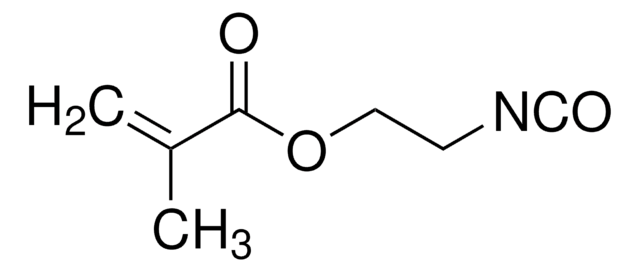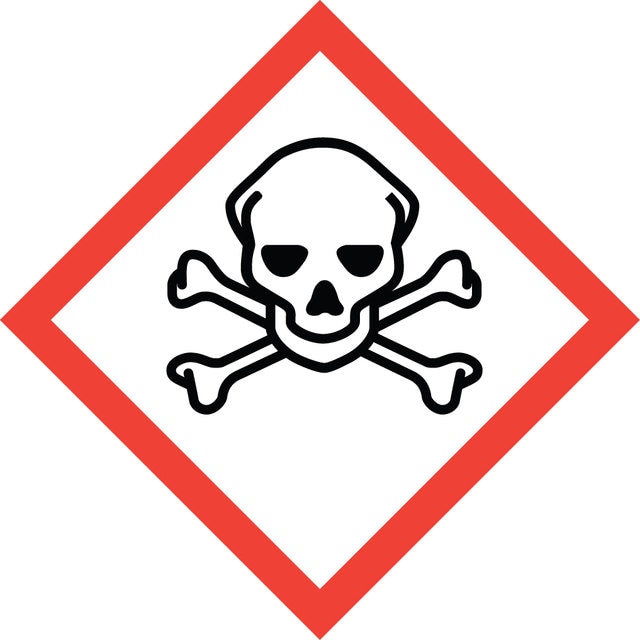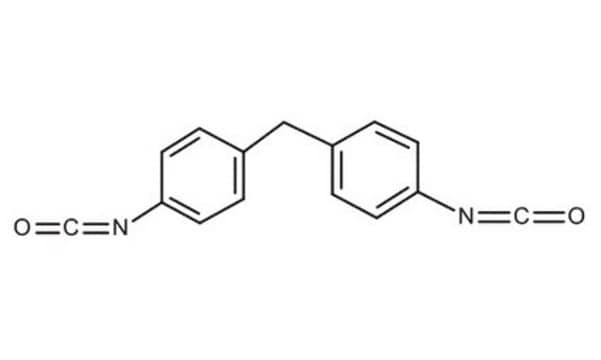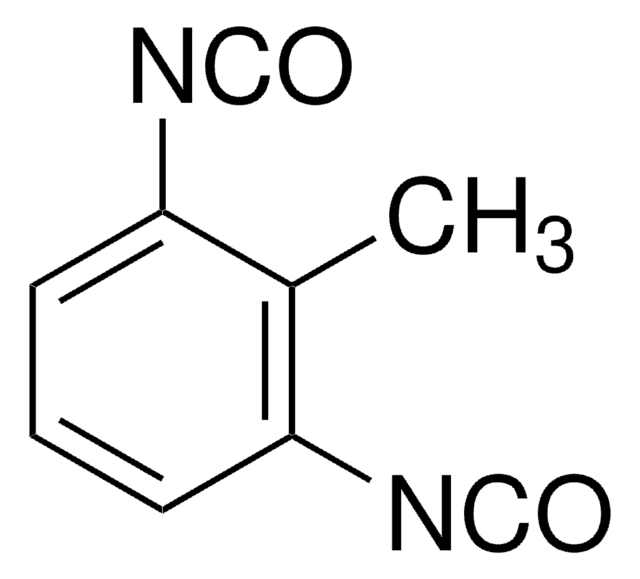모든 사진(1)
About This Item
Linear Formula:
OCN(CH2)6NCO
CAS Number:
Molecular Weight:
168.19
Beilstein:
956709
EC Number:
MDL number:
UNSPSC 코드:
12162002
PubChem Substance ID:
NACRES:
NA.23
추천 제품
grade
purum
Quality Level
분석
≥98.0% (GC)
refractive index
n20/D 1.453
bp
82-85 °C/0.1 mmHg
density
1.047 g/mL at 20 °C (lit.)
SMILES string
O=C=NCCCCCCN=C=O
InChI
1S/C8H12N2O2/c11-7-9-5-3-1-2-4-6-10-8-12/h1-6H2
InChI key
RRAMGCGOFNQTLD-UHFFFAOYSA-N
유사한 제품을 찾으십니까? 방문 제품 비교 안내
일반 설명
Hexamethylene diisocyanate (HDI) is an aliphatic diisocyanate monomer belonging to the class of isocyanates. It is primarily used in the production of polyurethanes. The isocyanate functional groups in hexamethylene diisocyanate react readily with polyols to form polyurethane polymers. Polyurethanes derived from HDI are commonly used in various products, including coatings, adhesives, sealants, elastomers, foams, thin-film transistors, flexible or rigid plastics, biomedical applications, electronics and aerospace industries. It is also used to produce oligomers and prepolymers that when combined with a polyol produce light-stable polyurethane.
애플리케이션
Hexamethylene diisocyanate (HDI) is used as:
- A crosslinker to crosslink the polyurethane chains in the triblock copolymer gate dielectric, which is then deposited on the substrate to fabricate low-voltage organic thin-film transistors.
- A precursor in the preparation of electroactive shape memory polyurethane/graphene nanocomposites. These materials are usually used as actuators, sensors, artificial muscles, smart devices, and microswitches.
- A crosslinker in conjunction with Pluronic F127, a nonionic surfactant, to synthesize a poly(lactic acid) (PLA)-based hydrogel for biomedical applications.
신호어
Danger
유해 및 위험 성명서
Hazard Classifications
Acute Tox. 1 Inhalation - Acute Tox. 4 Oral - Eye Dam. 1 - Resp. Sens. 1 - Skin Corr. 1C - Skin Sens. 1 - STOT SE 3
표적 기관
Respiratory system
Storage Class Code
6.1A - Combustible acute toxic Cat. 1 and 2 / very toxic hazardous materials
WGK
WGK 1
Flash Point (°F)
266.0 °F - Pensky-Martens closed cup
Flash Point (°C)
130 °C - Pensky-Martens closed cup
개인 보호 장비
Eyeshields, Faceshields, Gloves, type ABEK (EN14387) respirator filter
이미 열람한 고객
Self-healing polyurethane elastomer with thermally reversible alkoxyamines as crosslinkages
Yuan C, et al.
Polymer, 55(7), 1782-17971 (2014)
Chain extending of lactic acid oligomers. 2. Increase of molecular weight with 1,6-hexamethylene diisocyanate and 2,2'-bis(2-oxazoline)
Tuominen J, et al.
Polymer, 43(1), 3-10 (2002)
Highly stable plastic optical fibre amplifiers containing [Eu(btfa)3(MeOH)(bpeta)]: A luminophore able to drive the synthesis of polyisocyanates
Fabbri P, et al.
Polymer, 55(2), 488-494 (2014)
Sander M van Putten et al.
Journal of biomedical materials research. Part A, 98(4), 527-534 (2011-06-18)
Biomaterials are at continuous risk of bacterial contamination during production and application. In vivo, bacterial contamination of biomaterials delays the foreign body reaction (FBR). Endotoxins such as lipopolysaccharides (LPS), major constituents of the bacterial cell wall, are potent stimulators of
Ying-Yu Chen et al.
Langmuir : the ACS journal of surfaces and colloids, 29(11), 3721-3729 (2013-02-28)
The purpose of this study is to develop an injectable thermoresponsive hydrogel system that can undergo sol-gel phase transition by the stimulation of body temperature with improved mechanical stability and biocompatibility as a controlled drug delivery carrier for cancer therapy.
프로토콜
HPLC Analysis of Isocyanates on Titan™ C18
자사의 과학자팀은 생명 과학, 재료 과학, 화학 합성, 크로마토그래피, 분석 및 기타 많은 영역을 포함한 모든 과학 분야에 경험이 있습니다..
고객지원팀으로 연락바랍니다.













